Credit Insecurity on US Native Lands

About this Dashboard This data dashboard maps county-level credit insecurity as ranked by the New York Federal Reserve Bank to US Native Lands. County-level insecurity rankings do not necessarily account for actual credit needs within reservation boundaries and, in many cases, may show inaccurate rankings depending on the percentage of off-reservation population contained within each […]
Quantifying Disparities in Agricultural Revenue on Native Lands
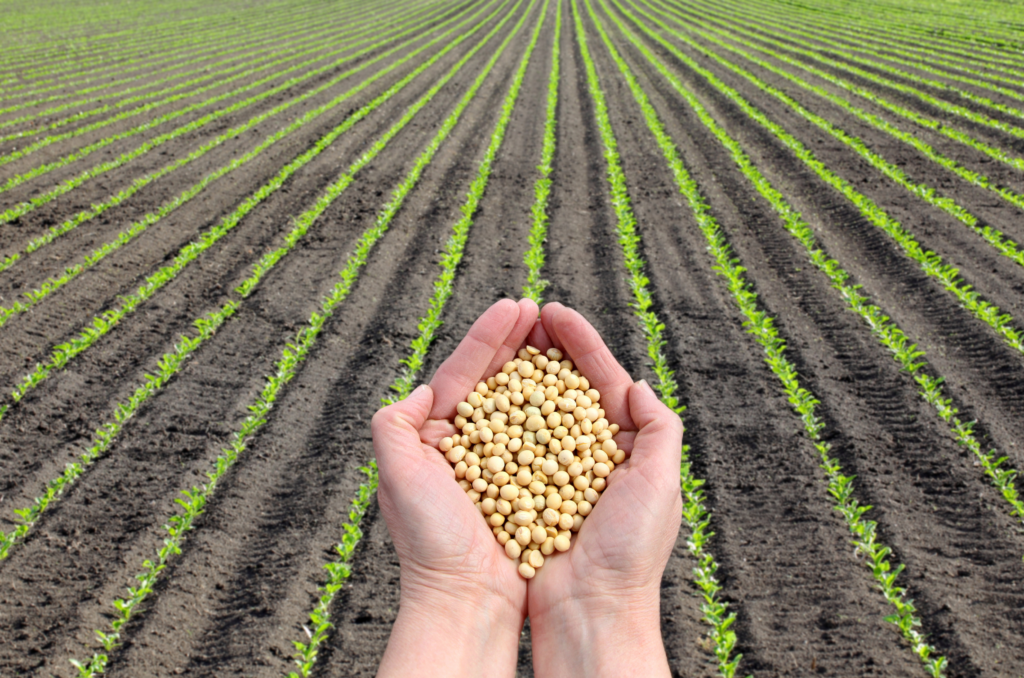
According to our Lost Agriculture Revenue Database, non-Native farmers have made $749,517,889,778 in agricultural revenue (85.7% of total revenue) on Native reservations since 1840, while Native farmers have made $125,018,539,082 (14.3% of total revenue). What factors contribute to this shocking disparity in agricultural revenue? And what do these numbers really represent for Native communities?
NLAP Presents Lost Agriculture Revenue Database to Oceti Sakowin Titunwan Lakota Oyate Treaty Conference – 12/16/2021
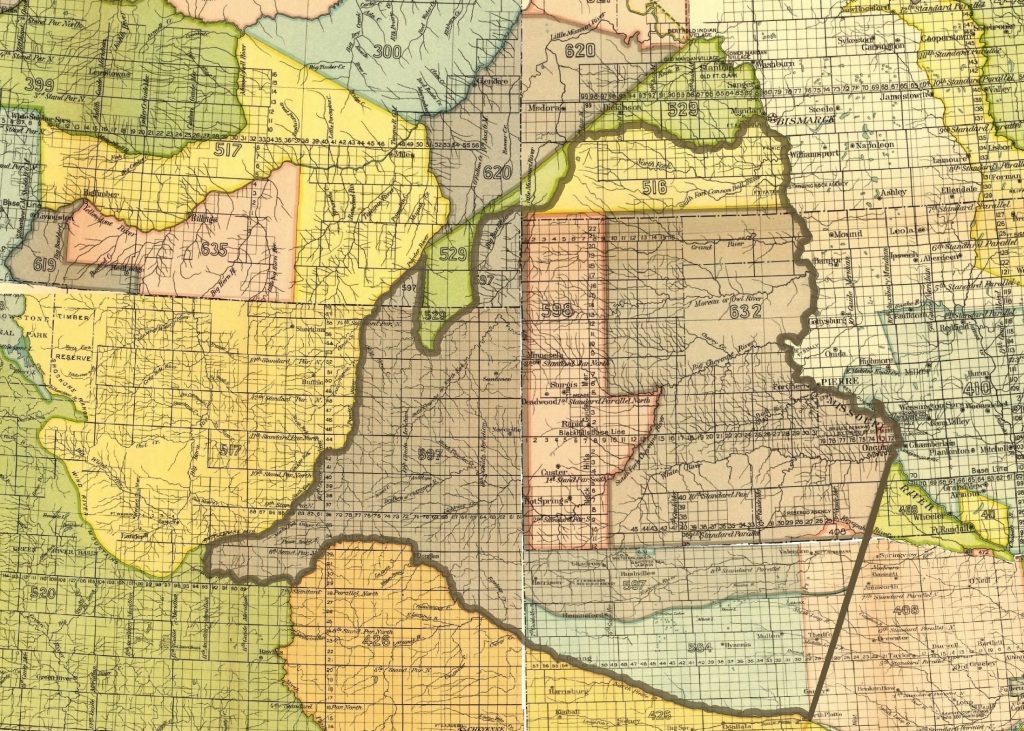
David Bartecchi, Director of Village Earth and its Native Lands Advocacy Project (NLAP), had the honor to present the project’s Lost Agriculture Revenue Database (LARD) at the 3rd Annual Oceti Sakowin Titunwan Lakota Oyate Treaty Conference, December 14-16 in Rapid City, South Dakota. The conference was hosted in partnership with the International Indian Treaty Council […]
How Much Discriminatory Lending Practices Impact Agricultural Revenue on US Native Land

By Aude K. Chesnais Introduction: Lending and Debt on US Native Land In 2018, the Keepseagle settlement shed light on widespread lending discrimination across the native agricultural landscape. Native Americans sued the US Department of Agriculture in an attempt to settle historical lending discrimination, which resulted in a 720 million dollar settlement, split between individual […]
Sustainable Food Systems for US Native Lands: A Story Untold

The myth of an “empty land” where Natives lived idly without making good use of their natural resources is persistent and served as the primary base to justify taking lands away from tribes. Contrary to stereotypes, Native Agriculture was diverse and flourishing prior to settler colonialism.
The General Allotment Act of 1887 Crippled Native Agriculture for Generations
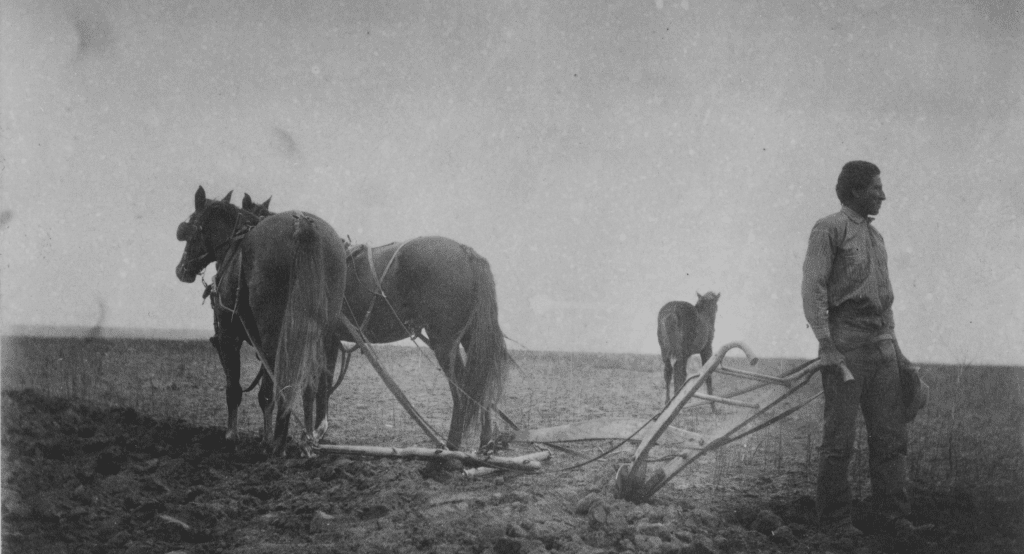
Today, the US Bureau of Indian Affairs (BIA) holds 66 million acres of lands in trust for various Indian tribes and individuals. Approximately 46 million acres (69%) of this land is used for farming and grazing by livestock and game animals. However, Native Americans are not the primary beneficiaries of agriculture on their lands. According to the […]
Agriculture Revenue from Contemporary US Native Lands
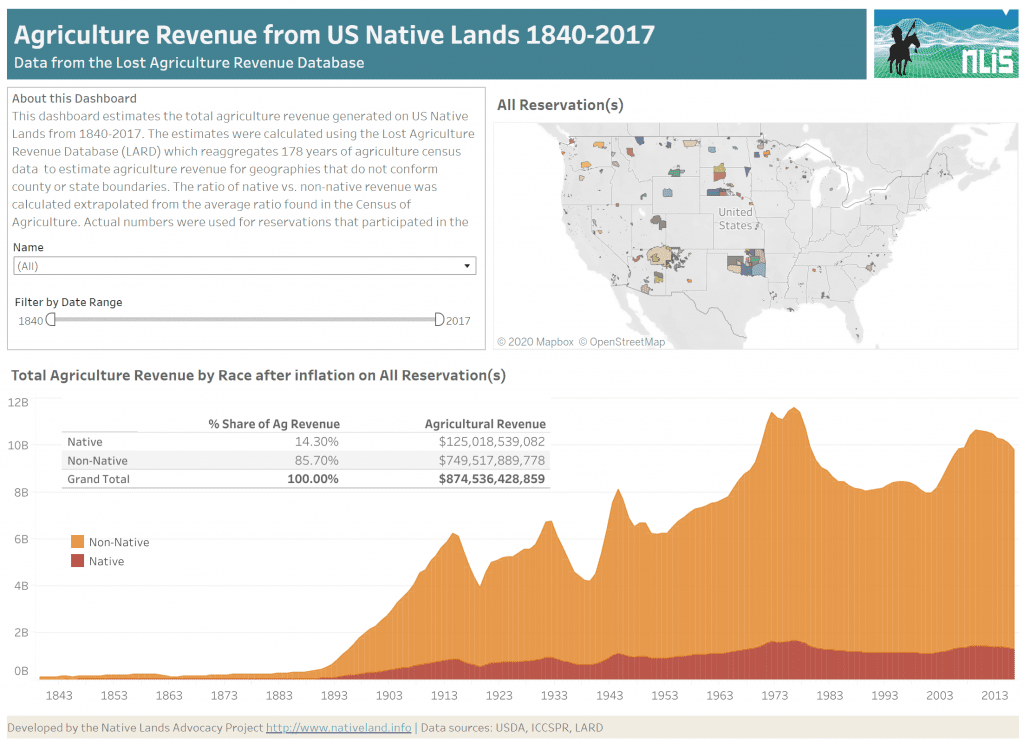
About this Dashboard This data dashboard, developed by the Native Lands Advocacy Project, estimates the agriculture revenue, adjusted for inflation, for all contemporary Native lands within the coterminous United States. Total agricultural revenue can be shown in aggregate for all native lands or filtered for one or more reservation lands. This dashboard also extrapolates the […]
Lost Agriculture Revenue from Ceded Native Lands
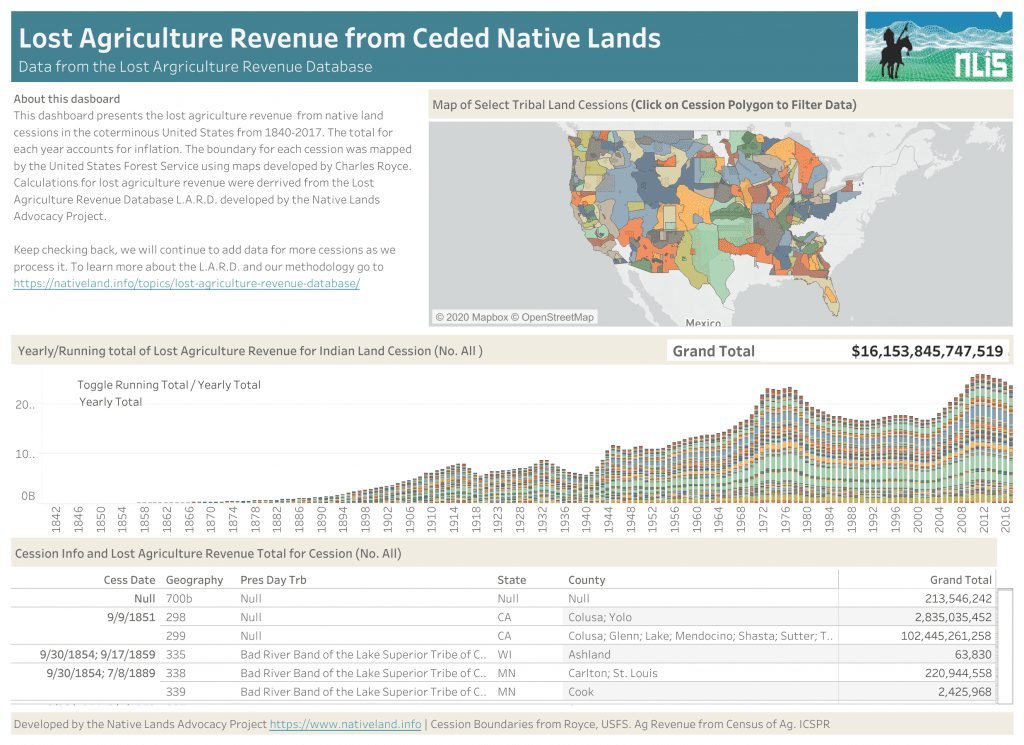
About this Dashboard This data dashboard, developed by the Native Lands Advocacy Project, estimates 177 years of lost agriculture revenue from lands ceded from Native Americans from 1840 to 1897. The dashboard makes it possible to view the total lost agriculture revenue from one or more cessions (by clicking on cession polygon in map or […]
Lost Agriculture Revenue from Contemporary United States Native Lands
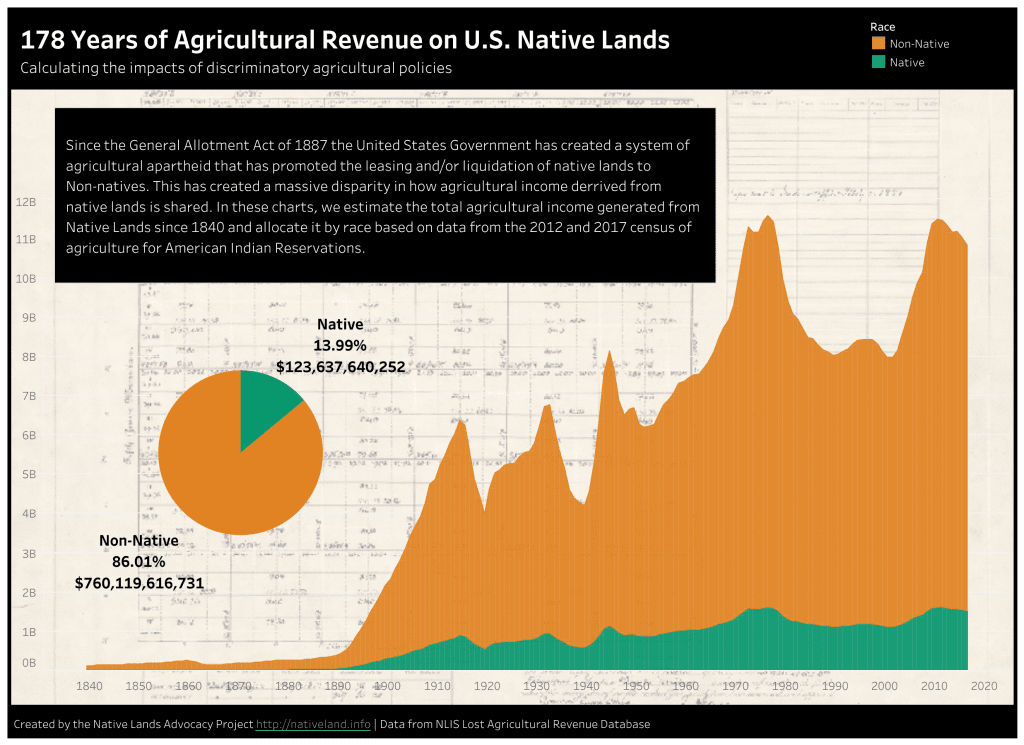
About this Dashboard This data dashboard, developed by the Native Lands Advocacy Project, summarizes the lost agriculture revenue for all contemporary Native lands within the coterminous United States. The dashboard was generated from the Lost Agriculture Revenue Database built upon 178 years of Agriculture Census Data. Dollars values are adjusted to account for inflation. Million Acres […]
Lost Agriculture Revenue Database
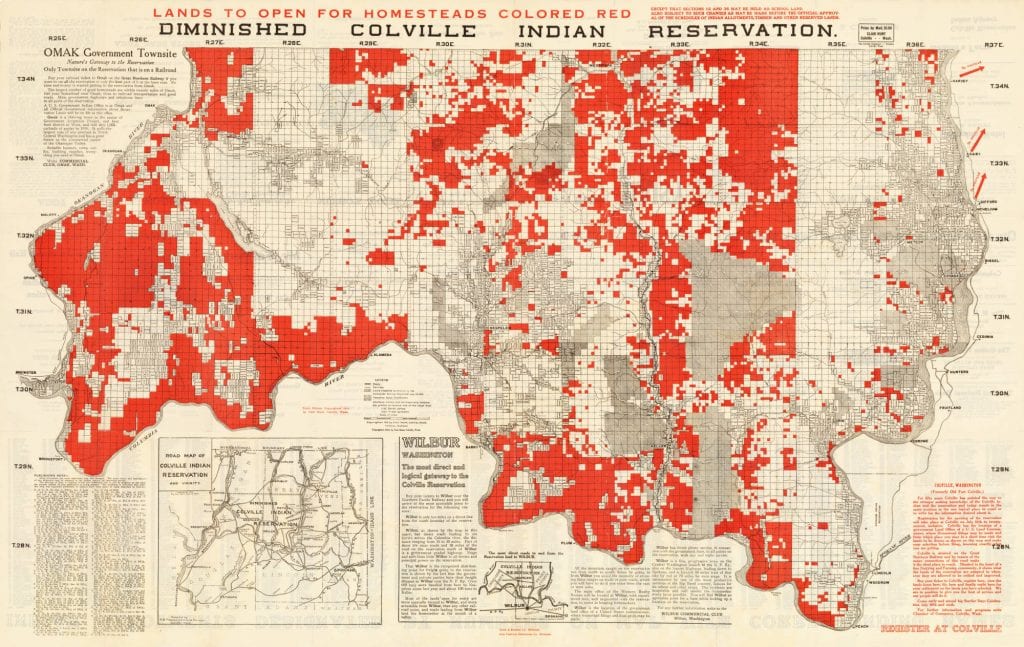
Lost Agriculture Revenue Database (L.A.R.D) The L.A.R.D. database was developed by the Native Lands Advocacy Project to help quantify the impacts of land cessions and discriminatory agriculture policies of the United States government. The name of the database is a double-entendre of the Lakota word Wasi’chu which translates as “takes the fat” and was used […]
Introducing the Native Land Information System
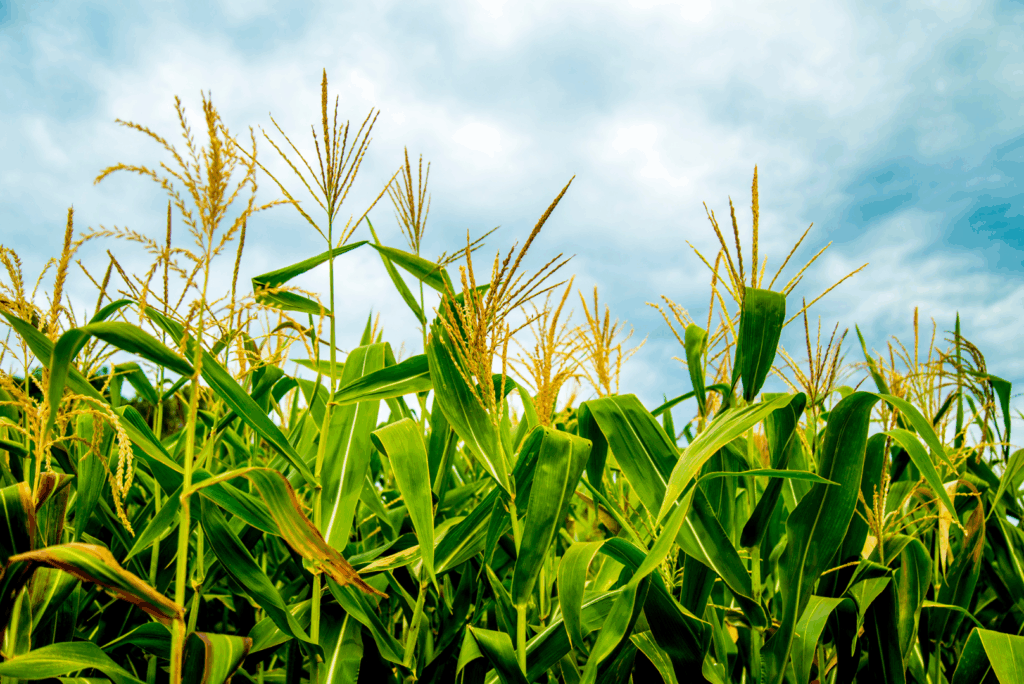
The Native Land Information System serves as a repository of learning resources, information, and data to help defend and protect Native lands for the benefit of Native peoples.
